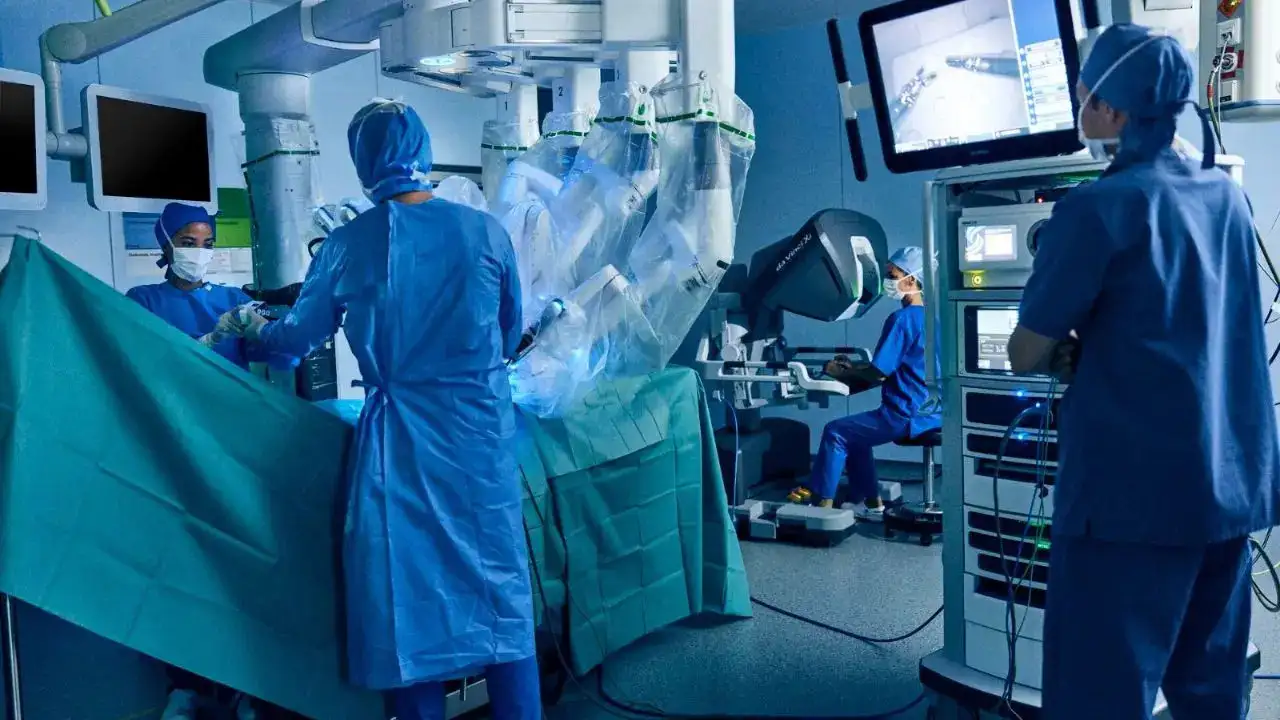
Doctors say RAPN helps preserve the remaining healthy kidney tissue
Kidney cancer is among the deadliest cancers across the world, with cases rising mostly among youngsters. According to experts, India is also witnessing a steady increase in incidence, and to combat this rising burden, surgical treatment of kidney tumours is undergoing a significant shift. Apart from the traditional methods of surgery, which mostly require complete organ removal—even for small or complex tumours—newer techniques that prioritise organ preservation and long-term kidney function are being tried.
A minimally invasive surgical procedure, known as robotic-assisted partial nephrectomy or RAPN, is now fast becoming the preferred approach for treating localised tumours in the kidney. While experts believe it is a new-age technology-driven method, it also helps preserve the remaining healthy kidney tissue. “Using advanced technologies like the da Vinci robotic platform, RAPN combines enhanced 3D vision and precise instrument control, enabling surgeons to remove tumours while sparing healthy kidney tissue,” Dr Rahul Devraj, Professor, Department of Urology and Renal Transportation, Coordinator for Robotic Surgery, NIMS-Hyderabad, told Times Now.
How does RAPN work?
According to Dr Devraj, one of the major positives of RAPN is its ability to treat anatomically complex tumours which were once deemed unsuitable for nephron-sparing surgery. “Endophytic tumours, which are located deep within the kidney, were typically managed by removing the entire organ. Robotic-assisted surgery now makes it possible for tumours to be accessed and excised more safely, without compromising the normal functioning of the kidney,” he added.
It also provides better oncological outcomes, as open surgery allows for surgical margins as narrow as 5 mm without compromising cancer clearance. “This level of accuracy reduces the removal of healthy tissue while still maintaining a negative surgical margin, which is vital for minimising the risk of recurrence,” Dr Devraj added.
During surgery, RAPN also provides several other key benefits, like reduction in ischaemia time – the period during which blood flow to the kidney gets temporarily clamped. “Shortening this time is vital to ensuring that healthy tissue continues to function after surgery. Precise suturing and cauterization also help minimize bleeding and support faster recovery,” said Dr Ch. Ram Reddy, Professor and Head of Department – Urology and Renal Transplantation, NIMS-Hyderabad.
Dr Reddy added that it is beneficial, especially for those in high-risk groups. “In patients with a single kidney or those with two poorly functioning kidneys due to chronic disease, preserving even a small portion of renal function can be the difference between independence and dialysis. Even in cases where the tumour extends into the urinary collecting system or is close to major vessels, robotic assistance enables safe dissection and accurate reconstruction, improving the likelihood of a complete and complication-free recovery,” he said.
What are the other benefits of RAPN?
A few other benefits of RAPN robotic surgery include:
- Less pain
- Reduced blood loss
- Shorter hospital stays
- Faster recovery compared to open surgery
- Reduction in surgical trauma
